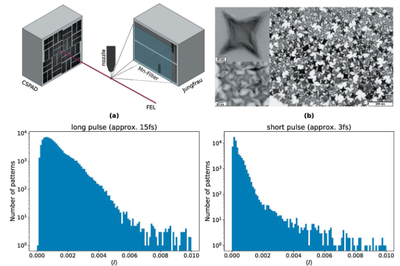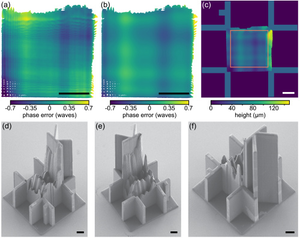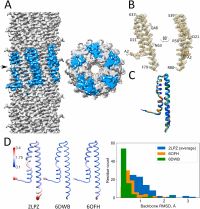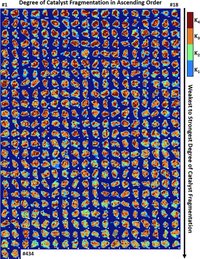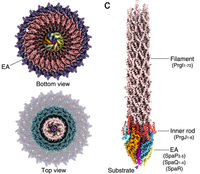Leprosy, a chronic infectious disease, leads to blood mineral imbalances: low levels of zinc, calcium, magnesium, and iron and high levels of copper. Interestingly, in late medieval Europe, minerals were used to treat leprosy. We investigated physiological responses to leprosy and possible evidence of treatment in dental tissues of leprosy sufferers from medieval Denmark and early 20th century Romania when multidrug therapy was not then yet invented. Using Synchrotron Fluorescence (SXRF) and laser ablation (LA-ICP-TOFMS), we show marked covariations in the zinc, calcium, and magnesium distributions, which are compatible with clinical studies but cannot be directly attributed to leprosy. Minerals used historically as a treatment for leprosy show no detectable intake (arsenic, mercury) or a diffuse distribution (lead) related to the daily consumption of contaminated water and food. Intense lead enrichments indicate acute incorporations, potentially through the administration of lead-enriched medication or the mobilization of lead from bone stores to the bloodstream during intense physiological stress related to leprosy. However, comparisons with a healthy control group are needed to ascertain these interpretations. The positive correlations and the patterns observed between lead and essential elements may indicate underlying pathophysiological conditions, demonstrating the potential of the two techniques for investigating diseases in past populations. Brozou A, Mannino MA, Van Malderen SJM, Garrevoet J, Pubert E, Fuller BT, Dean MC, Colard T, Santos F, Lynnerup N, Boldsen JL, Jørkov ML, Soficaru AD, Vincze L, Cabec AL. |
Interactions between proteins and their solvent environment can be studied in a bottom-up approach using hydrogen-bonded chromophore-solvent clusters. The ultrafast dynamics following UV-light-induced electronic excitation of the chromophores, potential radiation damage, and their dependence on solvation are important open questions. The microsolvation effect is challenging to study due to the inherent mix of the produced gas-phase aggregates. We use the electrostatic deflector to spatially separate different molecular species in combination with pump-probe velocity-map-imaging experiments. We demonstrate that this powerful experimental approach reveals intimate details of the UV-induced dynamics in the near-UV-absorbing prototypical biomolecular indole-water system. We determine the time-dependent appearance of the different reaction products and disentangle the occurring ultrafast processes. This approach ensures that the reactants are well-known and that detailed characteristics of the specific reaction products are accessible – paving the way for the complete chemical-reactivity experiment. Onvlee, J., Trippel, S. & Küpper, J. |
With the development of X-ray free-electron lasers (XFELs), producing pulses of femtosecond durations comparable with the coherence times of X-ray fluorescence, it has become possible to observe intensity–intensity correlations due to the interference of emission from independent atoms. This has been used to compare durations of X-ray pulses and to measure the size of a focusedX-ray beam, for example. Here it is shown that it is also possible to observe the interference of fluorescence photons through the measurement of the speckle contrast of angle-resolved fluorescence patterns. Speckle contrast is often used as a measure of the degree of coherence of the incident beam or the fluctuations of the illuminated sample as determined from X-ray diffraction patterns formed by elastic scattering, rather than from fluorescence patterns as addressed here. Commonly used approaches to estimate speckle contrast were found to suffer when applied to XFEL-generated fluorescence patterns due to low photon counts and a significant variation of the excitation pulse energy from shot to shot. A new method to reliably estimate speckle contrast under such conditions, using a weighting scheme, is introduced. The method is demonstrated by comparing the speckle contrast of fluorescence observed with pulses of 3 fs to 15 fs duration. Fabian Trost, Kartik Ayyer, Dominik Oberthuer, Oleksandr Yefanov, Saša Bajt, Carl Caleman, Agnes Weimer, Artur Feld, Horst Weller, Sébastien Boutet, Jason Koglin, Nicusor Timneanu, Joachim von Zanthier, Ralf Röhlsberger and Henry N. Chapman |
Fossils are critical for understanding the evolutionary diversification, turnover, and morphological disparification of extant lineages. While fossils cannot be sequenced, phenome-scale data may be generated using micro-computed tomography (μ-CT), thus revealing hidden structures and Insects 2022, 13, 796. https://doi.org/10.3390/insects13090796 Boudinot, B.E.; Richter, A.K.; Hammel, J.U.; Szwedo, J.; Bojarski, B.; Perrichot, V. |
Photophoretic forces are induced when light causes a net momentum exchange between a particle and a surrounding gas. Such forces have been shown to be a robust means for trapping and guiding particles in air over long distances. Here, we apply the concept of an optical funnel for the delivery of bioparticles to the focus of an x-ray free-electron laser (XFEL) for femtosecond x-ray diffractive imaging. We provide the experimental demonstration of transversely compressing a high-speed beam of aerosolized viruses via photophoretic forces in a low-pressure gas environment. Relative temperature gradients induced on the viruses by the laser are estimated via particle-velocimetry measurements. The results demonstrate the potential for an optical funnel to improve particle-delivery efficiency in XFEL imaging and spectroscopy. Opt. Express 30, 31519-31529 (2022) Frank Seiboth, Adam Kubec, Andreas Schropp, Sven Niese, Peter Gawlitza, Jan Garrevoet, Vanessa Galbierz, Silvio Achilles, Svenja Patjens, Michael E. Stuckelberger, Christian David, and Christian G. Schroer |
Photophoretic forces are induced when light causes a net momentum exchange between a particle and a surrounding gas. Such forces have been shown to be a robust means for trapping and guiding particles in air over long distances. Here, we apply the concept of an optical funnel for the delivery of bioparticles to the focus of an x-ray free-electron laser (XFEL) for femtosecond x-ray diffractive imaging. We provide the experimental demonstration of transversely compressing a high-speed beam of aerosolized viruses via photophoretic forces in a low-pressure gas environment. Relative temperature gradients induced on the viruses by the laser are estimated via particle-velocimetry measurements. The results demonstrate the potential for an optical funnel to improve particle-delivery efficiency in XFEL imaging and spectroscopy. |
The interaction of intense particle bunches with plasma can give rise to plasma wakes1,2 capable of sustaining gigavolt-per-metre electric fields3,4, which are orders of magnitude higher than provided by state-of-the-art radio-frequency technology5. Plasma wakefields can, therefore, strongly accelerate charged particles and offer the opportunity to reach higher particle energies with smaller and hence more widely available accelerator facilities. However, the luminosity and brilliance demands of high-energy physics and photon science require particle bunches to be accelerated at repetition rates of thousands or even millions per second, which are orders of magnitude higher than demonstrated with plasma-wakefield technology6,7. Here we investigate the upper limit on repetition rates of beam-driven plasma accelerators by measuring the time it takes for the plasma to recover to its initial state after perturbation by a wakefield. The many-nanosecond-level recovery time measured establishes the in-principle attainability of megahertz rates of acceleration in plasmas. The experimental signatures of the perturbation are well described by simulations of a temporally evolving parabolic ion channel, transferring energy from the collapsing wake to the surrounding media. This result establishes that plasma-wakefield modules could be developed as feasible high-repetition-rate energy boosters at current and future particle-physics and photon-science facilities. D’Arcy, R., Chappell, J., Beinortaite, J. et al. |
Highly accurate segmentation of large 3D volumes is a demanding task. Challenging applications like the segmentation of synchrotron radiation microtomograms (SRμCT) at high-resolution, which suffer from low contrast, high spatial variability and measurement artifacts, readily exceed the capacities of conventional segmentation methods, including the manual segmentation by human experts. The quantitative characterization of the osseointegration and spatio-temporal biodegradation process of bone implants requires reliable, and very precise segmentation. We investigated the scaling of 2D U-net for high resolution grayscale volumes by three crucial model hyper-parameters (i.e., the model width, depth, and input size). To leverage the 3D information of high-resolution SRμCT, common three axes prediction fusing is extended, investigating the effect of adding more than three axes prediction. In a systematic evaluation we compare the performance of scaling the U-net by intersection over union (IoU) and quantitative measurements of osseointegration and degradation parameters. Overall, we observe that a compound scaling of the U-net and multi-axes prediction fusing with soft voting yields the highest IoU for the class “degradation layer”. Finally, the quantitative analysis showed that the parameters calculated with model segmentation deviated less from the high quality results than those obtained by a semi-automatic segmentation method. Baltruschat, I.M., Ćwieka, H., Krüger, D. et al. |
Gram-negative pathogens evolved a syringe-like nanomachine, termed type 3 secretion system, to deliver protein effectors into the cytoplasm of host cells. An essential component of this system is a long helical needle filament that protrudes from the bacterial surface and connects the cytoplasms of the bacterium and the eukaryotic cell. Previous structural research was predominantly focused on reconstituted type 3 needle filaments, which lacked the biological context. In this work we introduce a facile procedure to obtain high-resolution cryo-EM structure of needle filaments attached to the basal body of type 3 secretion systems. We validate our approach by solving the structure of Salmonella PrgI filament and demonstrate its utility by obtaining the first high-resolution cryo-EM reconstruction of Shigella MxiH filament. Our work paves the way to systematic structural characterization of attached type 3 needle filaments in the context of mutagenesis studies, protein structural evolution and drug development. Biochemistry and Biophysics Reports 27, 2021, 101039 Vadim Kotov, Michele Lunelli, Jiri Wald, Michael Kolbe, Thomas C. Marlovits, |
Ziegler-type catalysts are the grand old workhorse of the polyolefin industry, yet their hierarchically complex nature complicates polymerization activity–catalyst structure relationships. In this work, the degree of catalyst framework fragmentation of a high-density polyethylene (HDPE) Ziegler-type catalyst was studied using ptychography X-ray-computed nanotomography (PXCT) in the early stages of ethylene polymerization under mild reaction conditions. An ensemble consisting of 434 fully reconstructed ethylene prepolymerized Ziegler catalyst particles prepared at a polymer yield of 3.4 g HDPE/g catalyst was imaged. This enabled a statistical route to study the heterogeneity in the degree of particle fragmentation and therefore local polymerization activity at an achieved 3-D spatial resolution of 74 nm without requiring invasive imaging tools. To study the degree of catalyst fragmentation within the ensemble, a fragmentation parameter was constructed based on a k-means clustering algorithm that relates the quantity of polyethylene formed to the average size of the spatially resolved catalyst fragments. With this classification method, we have identified particles that exhibit weak, moderate, and strong degrees of catalyst fragmentation, showing that there is a strong heterogeneity in the overall catalyst particle fragmentation and thus polymerization activity within the entire ensemble. This hints toward local mass transfer limitations or other deactivation phenomena. The methodology used here can be applied to all polyolefin catalysts, including metallocene and the Phillips catalysts to gain statistically relevant fundamental insights in the fragmentation behavior of an ensemble of catalyst particles. Koen W. Bossers, Roozbeh Valadian, Jan Garrevoet, Stijn van Malderen, Robert Chan, Nic Friederichs, John Severn, Arnold Wilbers, Silvia Zanoni, Maarten K. Jongkind, Bert M. Weckhuysen, and Florian Meirer |
Catalyst deactivation involves a complex interplay of processes taking place at different length and time scales. Understanding this phenomenon is one of the grand challenges in solid catalyst characterization. A process contributing to deactivation is carbon deposition (i. e., coking), which reduces catalyst activity by limiting diffusion and blocking active sites. However, characterizing coke formation and its effects remains challenging as it involves both the organic and inorganic phase of the catalytic process and length scales from the atomic scale to the scale of the catalyst body. Here we present a combination of hard X-ray imaging techniques able to visualize in 3-D the distribution, effect and nature of carbon deposits in the macro-pore space of an entire industrially used catalyst particle. Our findings provide direct evidence for coke promoting effects of metal poisons, pore clogging by coke, and a correlation between carbon nature and its location. These results provide a better understanding of the coking process, its relation to catalyst deactivation and new insights into the efficiency of the industrial scale process of fluid catalytic cracking. M. Veselý, R. Valadian, L. Merten Lohse, M. Toepperwien, K. Spiers, J. Garrevoet, E. T. C. Vogt, T. Salditt, B. M. Weckhuysen, F. Meirer |
Batch scheduling systems are usually designed to maximise fair resource utilisation and efficiency, but are less well designed for demanding interactive processing, which requires fast access to resources while low upstart latency is only of secondary significance for high throughput of high performance computing scheduling systems. The computing clusters at DESY are intended as batch systems for end users to run massive analysis and simulation jobs enabling fast turnaround systems, in particular when processing is expected to feed back to operation of instruments in near real-time. The continuously increasing popularity of Jupyter Notebooks for interactive and online processing made an integration of this technology into the DESY batch systems indispensable. We present here our approach to utilise the HTCondor and SLURM backends to integrate Jupyter Notebook servers and the techniques involved to provide fast access. The chosen approach offers a smooth user experience allowing users to customize resource allocation tailored to their computational requirements. In addition, we outline the differences between the HPC and the HTC implementations and give an overview of the experience of running Jupyter Notebook services. |
Mycobacterium tuberculosis is the cause of one of the most important infectious diseases in humans, which leads to 1.4 million deaths every year(1). Specialized protein transport systems-known as type VII secretion systems (T7SSs)-are central to the virulence of this pathogen, and are also crucial for nutrient and metabolite transport across the mycobacterial cell envelope(2,3). Here we present the structure of an intact T7SS inner-membrane complex of M. tuberculosis. We show how the 2.32-MDa ESX-5 assembly, which contains 165 transmembrane helices, is restructured and stabilized as a trimer of dimers by the MycP(5) protease. A trimer of MycP(5) caps a central periplasmic dome-like chamber that is formed by three EccB(5) dimers, with the proteolytic sites of MycP(5) facing towards the cavity. This chamber suggests a central secretion and processing conduit. Complexes without MycP(5) show disruption of the EccB(5) periplasmic assembly and increased flexibility, which highlights the importance of MycP(5) for complex integrity. Beneath the EccB(5)-MycP(5) chamber, dimers of the EccC(5) ATPase assemble into three bundles of four transmembrane helices each, which together seal the potential central secretion channel. Individual cytoplasmic EccC(5) domains adopt two distinctive conformations that probably reflect different secretion states. Our work suggests a previously undescribed mechanism of protein transport and provides a structural scaffold to aid in the development of drugs against this major human pathogen. Nature volume 593, pages 445–448 (2021) Bunduc, CM, Fahrenkamp, D, Wald, J, Ummels, R, Bitter, W, Houben, ENG, Marlovits, TC |
Nondestructive imaging with both a large field of view and a high spatial resolution is crucial to understand complex materials and processes in science and technology. X-ray ptychography can provide highest spatial resolution but is limited in the field of view by the acquisition time and coherent flux at modern x-ray sources. By multi-beam ptychography, the sample can be imaged in parallel by several spatially separated and mutually incoherent beams. We have implemented this method using 3D nanoprinted x-ray optics to create tailor-made x-ray multi-beam arrays. The use of 3D printing allows us to create focusing optics with a minimum of nonfunctional support structures. In this way, large sample areas can be efficiently scanned in parallel with up to six illuminating beams. |
Many bacterial pathogens rely on virulent type III secretion systems (T3SSs) or injectisomes to translocate effector proteins in order to establish infection. The central component of the injectisome is the needle complex which assembles a continuous conduit crossing the bacterial envelope and the host cell membrane to mediate effector protein translocation. However, the molecular principles underlying type III secretion remain elusive. Here, we report a structure of an active Salmonella enterica serovar Typhimurium needle complex engaged with the effector protein SptP in two functional states, revealing the complete 800Å-long secretion conduit and unraveling the critical role of the export apparatus (EA) subcomplex in type III secretion. Unfolded substrates enter the EA through a hydrophilic constriction formed by SpaQ proteins, which enables side chain-independent substrate transport. Above, a methionine gasket formed by SpaP proteins functions as a gate that dilates to accommodate substrates while preventing leaky pore formation. Following gate penetration, a moveable SpaR loop first folds up to then support substrate transport. Together, these findings establish the molecular basis for substrate translocation through T3SSs and improve our understanding of bacterial pathogenicity and motility. Nat Commun 12, 1546 (2021). https://doi.org/10.1038/s41467-021-21143-1 Miletic, S., Fahrenkamp, D., Goessweiner-Mohr, N. et al |


